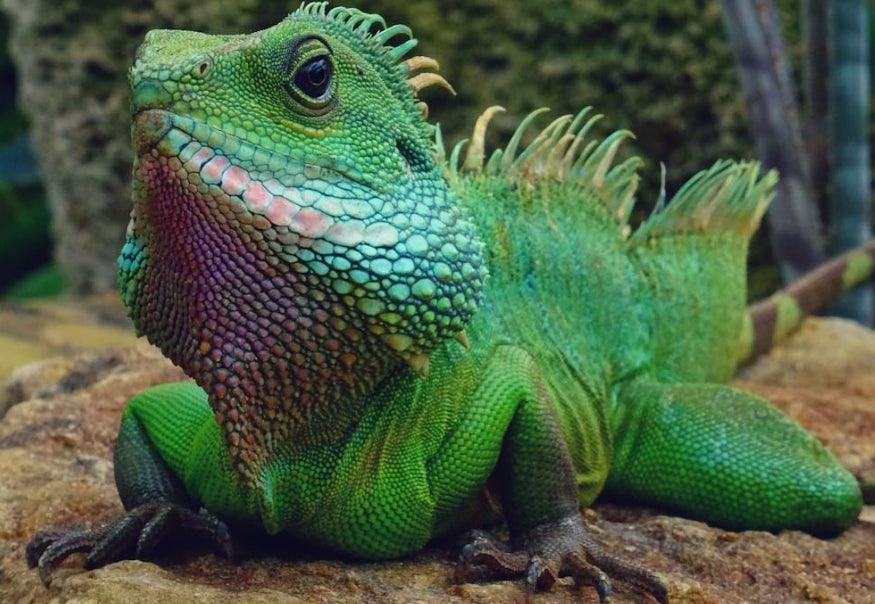Lizards are becoming increasingly popular as pets due to their unique appearance and relatively simple care requirements. However, caring for lizards still requires some knowledge and attention, especially when it comes to feeding. This article will introduce you to the basics and tips of lizard feeding to help ensure your pet lizard stays healthy and happy.

1. Identify the Type and Dietary Habits of Your Lizard
First, it’s crucial to understand the type of your lizard, as different types have different dietary needs. For example:
- Herbivorous lizards (like Iguanas): Primarily eat plants, including a variety of vegetables, fruits, and herbs.
- Carnivorous lizards (like Bearded Dragons and Leopard Geckos): Mainly eat insects, small mammals, or other small animals.
- Omnivorous lizards (like many desert lizards): Their diet includes insects, vegetables, and fruits.
Therefore, before feeding your lizard, you need to know whether it is herbivorous, carnivorous, or omnivorous.
2. Prepare Appropriate Food
Prepare appropriate types of food based on your lizard’s dietary needs:
-
For herbivorous lizards:
Offer fresh vegetables such as lettuce, spinach, kale, carrots, cucumbers, etc., choosing nutrient-rich, low-oxalate vegetables. Additionally, fruits like apples, bananas, and blueberries can be added in moderation as treats, but should not dominate the diet. -
For carnivorous lizards:
Feed live insects like crickets, grasshoppers, mealworms, and worms, adjusting the size and amount of insects based on the lizard’s size and appetite. Occasionally, small mammals (like mice) or frozen foods can be offered but ensure these foods are properly sanitized. -
For omnivorous lizards:
Mix both plant and animal-based foods to ensure they get a balanced diet. Consider using commercially available lizard feeds to balance nutrients.
3. Feeding Frequency and Timing
The feeding frequency and timing vary depending on the type and age of the lizard. Generally:
- Young lizards: Feed 1–2 times a day to ensure they get enough nutrients for rapid growth.
- Adult lizards: Depending on the type, herbivorous lizards may need feeding once a day, while carnivorous or omnivorous lizards may only need feeding every 2–3 days.
It’s advisable to feed lizards during the day as they are cold-blooded and generally more active under the sun, which helps them digest food better.

4. Ensure Variety and Nutritional Balance in Food
Lizard food should be varied to ensure they get enough vitamins and minerals. For example, you can sprinkle some calcium powder or vitamin supplements on insects or vegetables, especially for lizards prone to calcium deficiency (like Iguanas and Bearded Dragons). Also, avoid feeding the same food for long periods to prevent nutritional deficiencies.
5. Provide Clean Water Source
Lizards also need a clean water source to stay hydrated and healthy. Provide fresh drinking water daily and ensure the water dish is shallow enough to prevent the lizard from drowning. Herbivorous lizards often get enough water from their food, but it’s still crucial to keep the water supply clean and sufficient.
6. Monitor Your Lizard’s Health
While feeding, observe your lizard’s eating and excretion habits to gauge its health status. If your lizard shows signs of poor appetite, weight loss, abnormal excretion, or other unusual behaviors, seek veterinary help promptly.
Summary
Feeding a lizard involves more than just providing food; it requires understanding their habits and needs to ensure they live in a healthy environment. With the right feeding methods and sufficient care, you can keep your pet lizard healthy and happy. If you have any doubts about the specific type of your lizard, consider consulting a pet expert or professional veterinarian.
For specialized lizard feeding tools, check out Petfection Corner’s Naturalistic Aquarium Feeder, Leaf Shape Reptile Feeding Dish, and Wood Grain Reptile Feeding Basin to enhance your pet care experience.
We hope this guide helps you take better care of your pet lizard!

